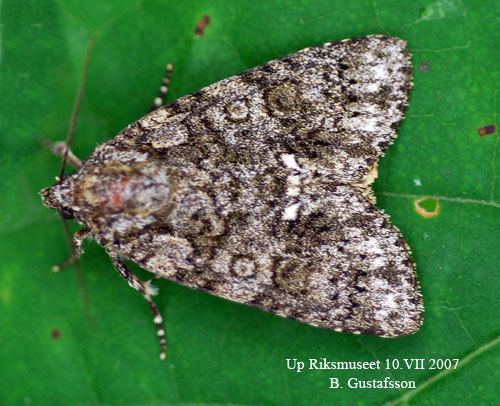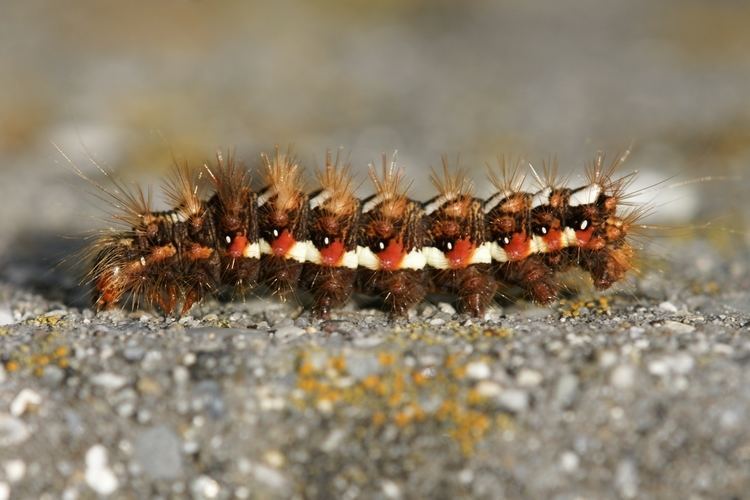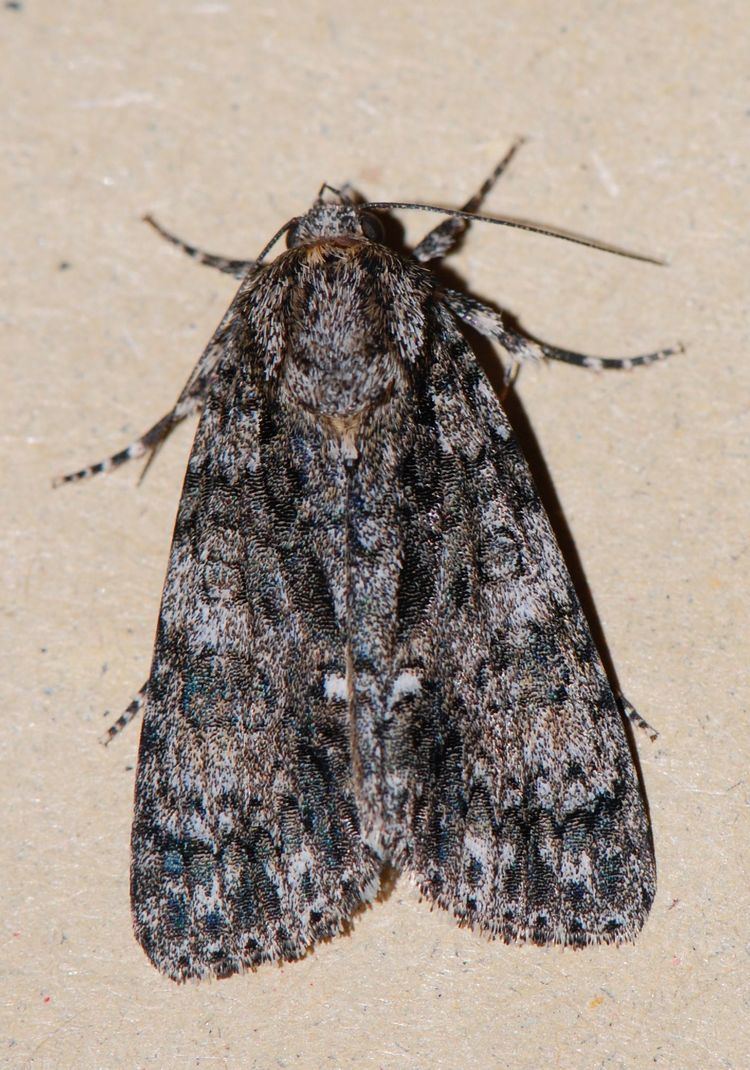Kingdom Animalia Order Lepidoptera Genus Acronicta Higher classification Acronicta | Phylum Arthropoda Family Noctuidae Scientific name Acronicta rumicis Rank Species | |
 | ||
Similar Acronicta, Butterflies and moths, Noctuidae, Grey dagger, Insect | ||
Acronicta rumicis caterpillar
The Knot Grass (Acronicta rumicis) is a moth of the family Noctuidae. It is distributed through the Palearctic – Europe, western North Africa, through Iraq, Iran, Afghanistan, Ural mountains through Siberia, Russian Far East, Mongolia, northern China, Central Asia to Korea and Japan. In Europe lacking only in some areas of north-western Scandinavia, northern Scandinavia and northern Russia. South in the Lebanon, Syria, Israel, Jordan, Cyprus, Caucasus. Also in north-western India.
Contents

Chenille acronicta rumicis
Description

The wingspan is 34–40 mm.Forewing dark grey, varied in places with whitish; lines and shades black; outer line marked by a white spot on the submedian fold ; hindwings brownish fuscous.Chinese and Japanese examples are larger than European and in all cases darker; in particular the lower half of forewing is blacker and the white spot of outer line then often obscured — ab. alnoides Geest has the costal half of forewing grey, the inner half blackish, somewhat interrupted, with a strong black dagger-shaped mark at base and above anal angle ; superficially resembles a dark grey alni ; recorded from Freiburg in Baden. — ab. euphorbiae Steph. nec Hbn. is grey brown, with the stigmata and space between them pale; and ab. euphrasiae Steph. née euphrasiae.Dup. is pale yellowish grey with numerous black lines and the orbicular stigma faint or obsolete, occurring in Cornwall.
The adults fly at night from May to July [1]. They are attracted to light.

The larvae feed on a range of herbaceous plants including Salix caprea, Urtica, Rumex obtusifolius, Rubus fruticosus, Euphorbia cyparissias, Calluna vulgaris, Plantago lanceolata, Centaurea jacea, Taraxacum sect. Ruderalia. etc.

Habitats: found in almost all habitats, and are all very common. In the mountains they may be found up to 1500 m above sea level.



